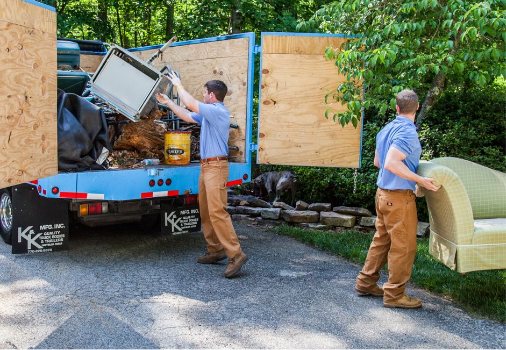Expert Waste Management Strategies Customized for Industrial Setup
Customizing waste management approaches to suit the one-of-a-kind requirements of industrial setups is not simply helpful but necessary for maintaining functional efficiency and environmental sustainability. The quest for enhanced waste monitoring in industrial settings entails a meticulous strategy that balances governing conformity, cost-effectiveness, and ecological obligation.
Relevance of Tailored Waste Administration
Customized waste monitoring practices are vital in industrial setups to maximize source usage and lessen ecological influence. Industrial operations generate a considerable quantity of waste, varying from strong byproducts to chemical pollutants, posing a threat to the atmosphere if not taken care of properly (Construction debris removal atlanta). By customizing waste administration techniques to match the specific needs and challenges of each commercial center, firms can not just abide by regulations however likewise improve operational efficiency and sustainability
One key aspect of customized waste monitoring is performing a complete waste assessment to identify the types and quantities of waste created. This analysis enables firms to apply targeted services such as recycling programs, waste partition procedures, and waste-to-energy campaigns. By comprehending the composition of their waste streams, industrial centers can create cost-efficient methods to decrease waste generation at the source, leading to long-term environmental advantages.

Types of Hazardous Waste
What are the various classifications of commercial waste commonly generated in producing procedures? Industrial waste can be identified right into several main classifications based on its make-up and qualities.
One more typical sort of commercial waste is non-hazardous waste, which incorporates materials like paper, plastics, and packaging waste. While non-hazardous waste may not present prompt threats, proper management is still vital to minimize garbage dump usage and advertise recycling and sustainability methods.

Hazardous Waste Handling Procedures
Efficient monitoring of dangerous waste in commercial settings requires strict adherence to developed handling procedures to minimize dangers and make sure environmental security. Hazardous waste handling procedures entail several crucial actions to reduce the possible impact on human health and wellness and the setting.
Secondly, when recognized, contaminated materials needs to be carefully segregated from non-hazardous waste to stop contamination and ensure appropriate therapy. Storage of dangerous waste must abide by policies relating to control, labeling, and compatibility to stop leaks, spills, or other occurrences that can endanger workers or the atmosphere.
Moreover, taking care of procedures should consist of the use of personal protective devices, worker training, and emergency situation feedback methods. Regular inspections, tracking, and documents of unsafe waste handling activities are vital to preserving compliance and determining locations for renovation. By complying with these structured treatments vigilantly, industrial facilities can efficiently handle contaminated materials and promote their commitment to ecological stewardship.
Executing Reliable Recycling Practices

To execute effective reusing techniques, commercial centers should first perform a waste audit to determine the types and amounts of recyclable materials generated in their procedures. Based on this audit, firms can then develop designated reusing terminals, offer appropriate training to workers on proper sorting strategies, and collaborate with relied on recycling partners for the collection and handling of materials. In addition, setting details recycling objectives, tracking progress, and regularly interacting with staff regarding the relevance of recycling are necessary steps to make sure the success and sustainability of recycling efforts in commercial setups.
Tracking and Continual Improvement
To guarantee the performance and sustainability of waste administration strategies in industrial settings, the execution of robust monitoring and constant renovation processes is crucial. Surveillance includes monitoring vital efficiency indicators (KPIs) such as waste generation rates, recycling portions, and disposal prices. Regularly evaluating these metrics enables organizations to identify areas for enhancement and Junk removal Atlanta determine the success of carried out waste monitoring campaigns.
Continual improvement is important for fine-tuning procedures with time. It entails analyzing keeping an eye on information, recognizing inefficiencies, and implementing changes to optimize waste administration techniques additionally. This repetitive technique promotes a society of continuous improvement and advancement within the organization.
Using technology like waste monitoring software application and IoT sensors can streamline checking initiatives, providing real-time information for notified decision-making. Worker training and engagement additionally play an important duty in ensuring the success of monitoring and constant improvement initiatives, as frontline personnel are usually principals in waste management procedures.
Conclusion
Finally, tailored waste monitoring strategies are crucial for commercial setups to efficiently handle different sorts of waste, including unsafe materials. By applying reliable recycling techniques and continuously surveillance and improving waste administration procedures, industries can lessen their environmental effect and make sure conformity with policies. It is crucial for companies to prioritize waste management to shield the environment and promote sustainability in their operations.